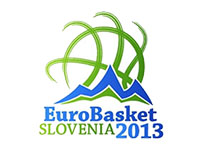FIBA EuroBasket
FIBA EuroBasket 2022
Like in previous editions, the FIBA EuroBasket tournament will take place in four different countries:
- Czech Republic – Prague (O2 Arena)
- Georgia – Tbilisi (Tbilisi Sports Palace)
- Germany – Cologne (group stage, Lanxess Arena) and Berlin (final, Mercedes-Benz Arena)
- Italy – Milan (Mediolanum Forum)
The EuroBasket 2017 draw took place on April 29th, 2021 in Berlin, Germany. The groups were formed as follows:
| Group A | Group B | Group C | Group D | ||||
|---|---|---|---|---|---|---|---|
| Russia | Germany | Greece | Netherlands | ||||
| Georgia | Hungary | Estonia | Finland | ||||
| Spain | Slovenia | Ukraine | Poland | ||||
| Bulgaria | Lithuania | Great Britain | Czech Republic | ||||
| Belgium | Belarus | Italy | Israel | ||||
| Turkey | France | Croatia | Serbia | ||||
FIBA EuroBasket 2015
The most successful team in the 2015 EuroBasket history was the then defunct Soviet Union, who held 14 titles. France were the reigning champions, winning the tournament in 2013.
Due to the upheaval in the Ukraine, plans for the 2015 event have been difficult and in June of 2014, the Ukraine lost the rights to host the 2015 edition. In September 2014, FIBA announced that the 2015 FIBA EuroBasket event would be spread out amongst Croatia, France, Germany, and Latvia with the draw for the 2015 event taking place in Disneyland on Monday the 8th of December, 2014. Each host nation was allocated to the Group being located in their country and the 24 teams were split into 6 seeded groups, with four teams in each pot.

The groups consisted of a team from each pot and were defined as in the following table:
| Group A | Group B | Group C | Group D | ||||
|---|---|---|---|---|---|---|---|
| France | Spain | Croatia | Lithuania | ||||
| Finland | Serbia | Slovenia | Ukraine | ||||
| Bosnia and Herzegovina | Turkey | Greece | Latvia | ||||
| Poland | Italy | F.Y.R. of Macedonia | Belgium | ||||
| Israel | Germany | Georgia | Czech Republic | ||||
| Russia | Iceland | Netherlands | Estonia | ||||
The 2015 EuroBasket tournament was won by Spain, for their third Gold Medal at the EuroBasket and the final match saw them triumph by a score of 80-62 against Lithuania. The Bronze medal was claimed by France who defeated Serbia by a score of 81-68.
The tournament was also used for Olympic qualification so all of the losing quarter-finalists took part in a separate event to settle the placings between 5th and 8th in the overall tournament. The Czech Republic claimed the fifth spot in the tournament, defeating Latvia in the final game after these two teams had triumphed against Greece and Italy respectively.
FIBA EuroBasket 2013

The 2013 FIBA EuroBasket event was held in Slovenia and it was the first time that France had ever won the event. France defeated Lithuania by 80-66 on the 22nd of September in Ljubljana in front of a 10,000 crowd. At the 2013 event, three teams held an 8-3 record. Eventual winners France, Lithuania, and Croatia all held an 8-3 record; Spain and Slovenia held a 7-4 record.
Teams who qualified for the 2015 EuroBasket event thanks to their record at the 2013 EuroBasket event were:
- Ukraine
- France
- Lithuania
- Spain
- Croatia
- Slovenia
- Serbia
- Italy
All of the above nations, with the exception of Italy, have qualified for the 2014 FIBA Basketball World Cup, scheduled to be held in Spain, thanks to their ranking at the 2013 EuroBasket.
24 Teams Format of the EuroBasket Event

There have been a number of different formats and styles used in the tournament. The current number of teams taking part in the final tournament is 24, whereas up until the 2011 event, this number was set at 16. In the 24 team event, 8 places are automatically given out. The host nation qualifies automatically and the top 7 ranked teams from the previous EuroBasket event are placed directly into the event.
This leaves 16 spaces up for groups. The remaining teams (31) were placed into 6 groups. This was split into 5 groups of 5 and a group of 6. The top 2 sides from a group automatically gained entry to the EuroBasket event and the top 4 ranked third placed teams gained entry.
This creates the 24 teams that play off in a host nation. The nature of the tournament then sees four groups being created each with 4 teams in it. The three best teams in each group proceed to the second round.
Best 8 Teams of Second Round Progress to the Knock-out Round
The second round sees the 12 teams be placed into two groups of 6. The top four sides in each group progress to the knockout round.
Knock-out round pairings were pre-determined as:
- E1 v F4
- F3 v E2
- F1 v E4
- F2 v E3
Winners of the top two ties play each other in the semi-final while the winners of the bottom two ties play each other in the other semi-final. There is a 5th placed bracket event, which sees the four losing quarter finalists play against each other. The losers of this tie play in the 7th Placed match, while the winners play in the 5th Placed match. The losers of the semi-final play in the 3rd Placed match. This allows a ranking of 1st through to 8th to be created, which plays a part in the qualification process for the next FIBA EuroBasket event and the FIBA Basketball World Cup.